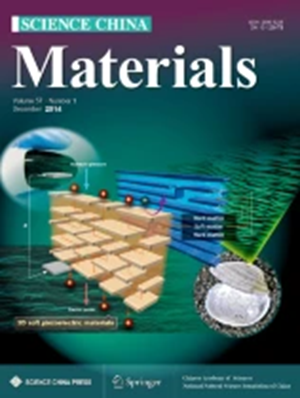High-temperature evolution processes of exciplex states in the TBRb/C60 planar-heterojunction OLEDs via in-situ heating
Abstract
Magneto-conductance (MC) was used as a fingerprint detection tool to contactlessly visualize high-temperature evolution processes of exciplex (EX) states in the TBRb/C60 planar-heterojunction (PHJ) organic light-emitting diodes (OLEDs). Specifically, MC was used to contactlessly observe at room temperature around 300 K. The reverse intersystem crossing (RISC) process from triplet to singlet EX states (EX3→ EX1) in the device at 300 K is observed for the first time from the TBRb/C60 PHJ-OLED. The device shows a half-band-gap turn-on photoelectric characteristics. Temperature-dependent MC traces of the device present an interesting conversion from RISC to triplet-charge annihilation (TQA) process between EX3 and charge carriers (T1 + q → e + h + q′) after the device temperature increasing from 300 to 425 K via in-situ heating. By comprehensively analyzing MC traces, current-voltage characteristic curves, transient electroluminescence spectra, and optical microscopy images of the device and atomic force microscopy images of the TBRb film, we find that the increase of temperature destroys the molecule structures of organic materials, which leads to the generation of many traps inside the organic semiconductor films comprising the TBRb/C60 PHJ-OLED. These traps will capture polaron-pairs, EX, and exciton states and then affect their interactions, which finally induces the changes of MC traces. This work not only deepens understandings of high-temperature evolution processes of polaron-pairs, EX, and exciton states in the TBRb/C60 PHJ devices, but also provides a new method to study the microscopic mechanisms in OLED operating in high temperature environment.

 求助内容:
求助内容: 应助结果提醒方式:
应助结果提醒方式:


